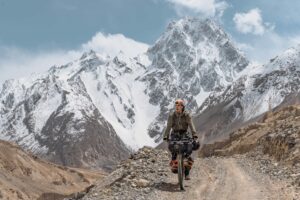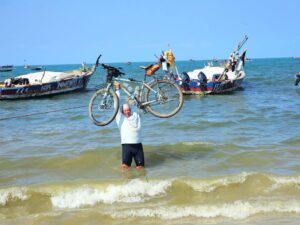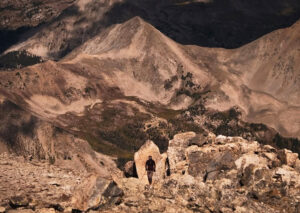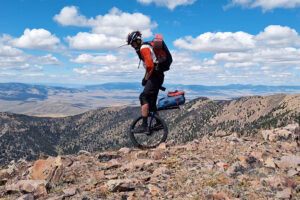British adventurer James Baxter is over 80 days into a 6,000km cycle across Africa. The journey, from the Atlantic Ocean in Namibia to the Indian Ocean in Tanzania, is part of a wider project to complete seven adventures on seven continents. Africa is number five.
Baxter, 65, is not a fan of adventure hubris and suggests that the journey is more cultural and spiritual than athletic or ego-driven.
“There are no sponsorship deals, no ostentation, no publicity,” he wrote on his blog before setting off. “Instead, the journeys should be made quietly without fanfare and with a degree of humbleness. The aim of the journey is to let the continent’s nature and culture absorb you so you learn from it and let it quench your curiosity…It should be a spiritual journey like that of a wandering sannyasin [a Hindu mendicant].”
The Briton crossed over into Malawi last Wednesday, “after a quite fantastic Zambia. Friendliest people on the planet…I am sad to leave but elated I can come back sometime,” Baxter told ExplorersWeb.
From cart to bike
Initially, Baxter had planned to haul a cart carrying all his food, water, and equipment across arid landscapes like the Skeleton Coast and the northern Kalahari. First, he designed a wooden prototype, which was too fragile and had too steep a pulling angle. Next came a more refined and robust steel-framed version.

The prototype wooden cart on its first outing in the soft sand of the beach with a 50kg payload. However, the wheels were too thin and the pulling bars too low on the cart, so the angle was excessively steep. Photo: James Baxter
Over time, though, Baxter began to have sleepless nights as the reality of slowly hauling a heavily laden cart dawned on him.
“Would the cart hold up and would it be a dreadful burden to pull under the hot sun, would I get attacked by animals during the night, would I be safe from people who saw my cart as a bounty chest?” he wondered at the time.
Baxter is no stranger to long, arduous journeys. In 2024, he became the oldest person to ski solo and unsupported to the South Pole via the Hercules Inlet route. He has also spent over 40 years adventuring around the world, including a 250-day journey skiing and kayaking the length and coast of Norway in 2009.
Eventually, Baxter abandoned the idea of dragging a cart and fixed on cycling across the continent from west to east. He started in Namibia, crossed into Botswana, Zambia, Malawi, and then finally Tanzania.

The planned cycling route avoids political instability and keeps to rural areas wherever possible. Photo: James Baxter
Namibia
From May 27 to June 8, the opening leg of Baxter’s ride across Africa, Baxter covered around 900km from his starting point at the coastal city of Swakopmund to Grootfontein in the northwest.
His route passed through fogbound Atlantic coastline, bone-dry desert, sunlit savannah, and cultivated farmland. He followed a quiet rhythm of early starts, long gravel tracks, and surprise wildlife encounters.
Baxter’s daily distances ranged from 70 to 100km, with steady elevation gains and the occasional headwind. Farmsteads often offered guesthouse accommodation, and sightings of baboons, warthogs, kudu, and oryx became routine. He spent nights with local families or camped between game fences and bushveld (woodland).
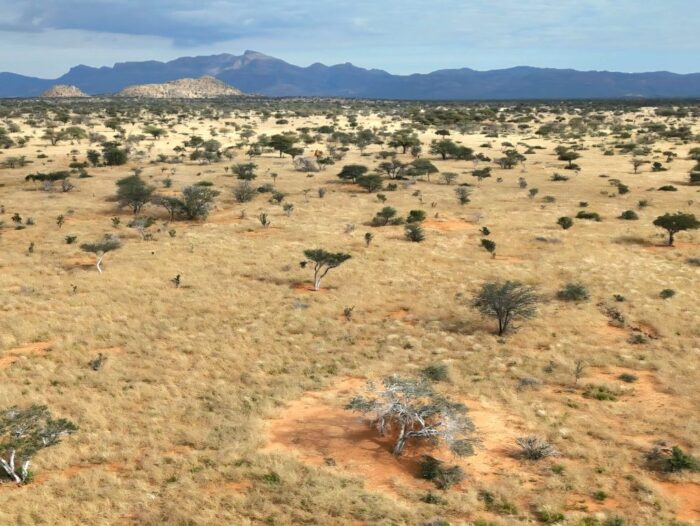
Looking across grass plains toward the Erongo Massif. Photo: James Baxter
For all its natural beauty, Baxter reports that northwest Namibia revealed a deeper social complexity. Much of the land he traversed was privately owned, often by white Namibians, reflecting an uneven legacy of land distribution that still shapes the region. While this leg of the journey brought warm welcomes and engaging conversations, these were largely limited to the white population.
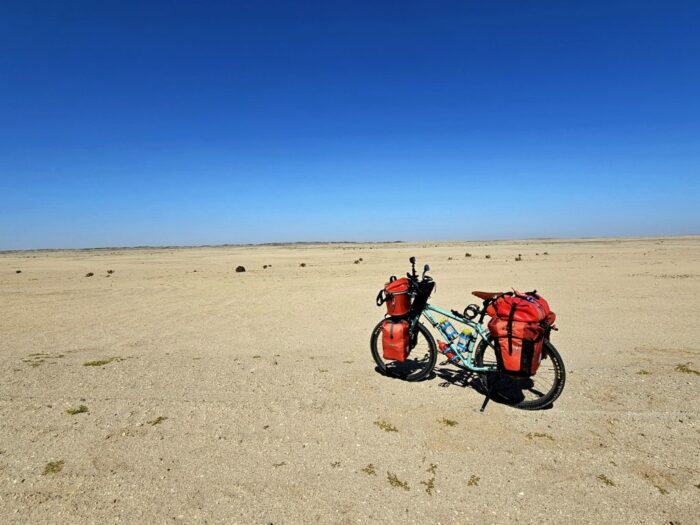
Continuing east through the barren Dorop National Park across the Namib desert. Photo: James Baxter
As Baxter approached the city of Grootfontein, the open landscape gave way to large-scale agriculture. On June 4, 26 days into the journey, the Briton passed through a quiet border post. This was the start of a more remote leg through rural Botswana.
Botswana
Baxter then began a six-day push through Botswana’s remote northwest, covering over 350km between the border and the town of Maun.
The first few days were on sandy, unmaintained tracks lined with cattle posts, termite mounds, and scattered bush. Deep sand made cycling slow, and sections had to be pushed, not ridden.
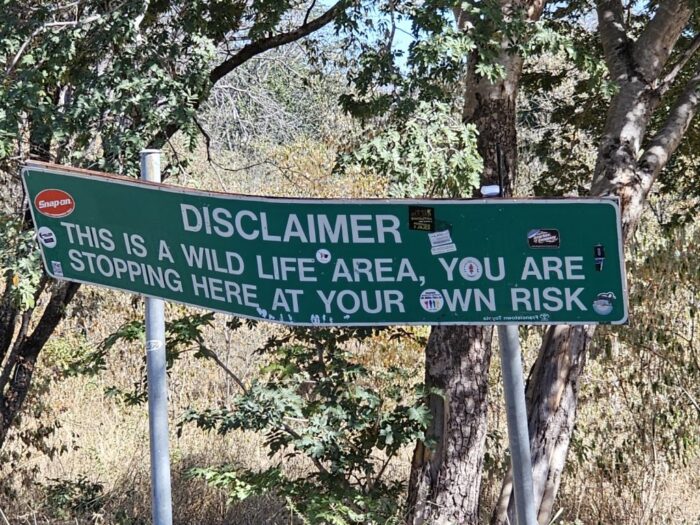
A gentle reminder at all the parking lay-bys on the road that wild animals were close. Photo: James Baxter
The road east improved gradually, and on June 8, Baxter reached Sehithwa, a quiet village near the long-dry basin of Lake Ngami. After a short rest, he covered the final 100km to Maun on June 9, riding into the town’s traffic and roadside bustle. Here, Baxter took several days to rest and enjoyed a walking safari tour.
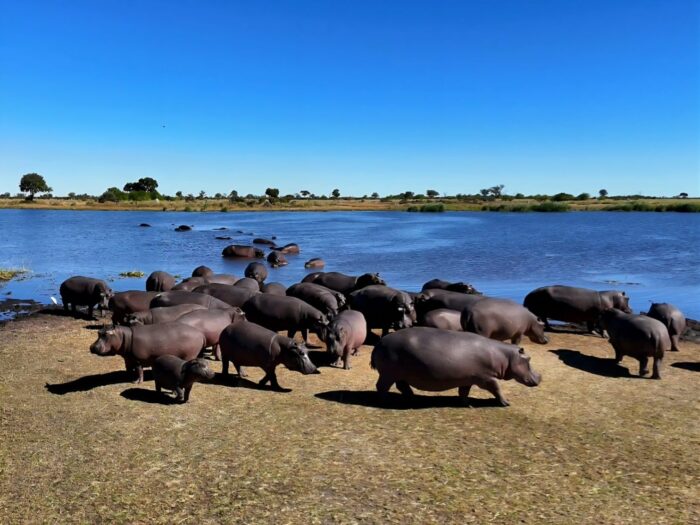
Photo: James Baxter
The next leg headed northeast, toward the town of Kasane, close to the border of southern Zambia. He reached it on June 26, 46 days into the ride. As in Namibia, Baxter wild camped and stayed in accommodation offered by helpful locals.
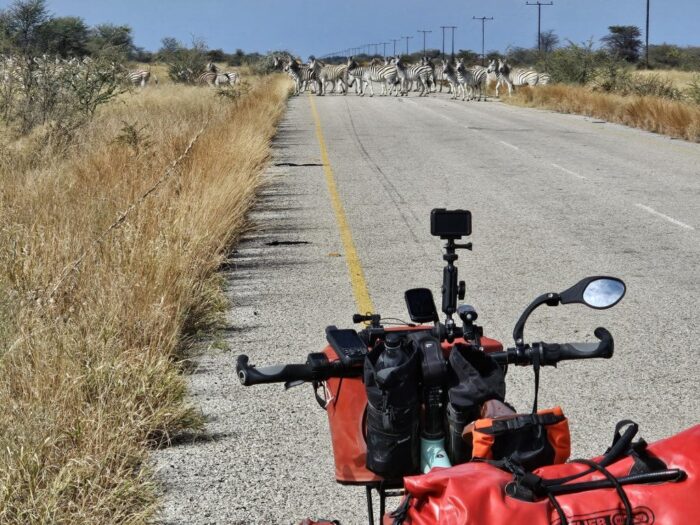
Waiting for a large herd of about 300 zebras to cross the road. Photo: James Baxter
Zambia
Baxter entered Zambia around June 25, beginning a leg that would take him across the country from west to east in around four weeks. The western section was remote and sparsely populated, marked by long stretches without amenities and basic infrastructure.
Water was often available, but food resupply was irregular, and accommodation was limited to wild camping or church-run rest houses. Despite logistical challenges, Baxter rode steadily over manageable terrain.
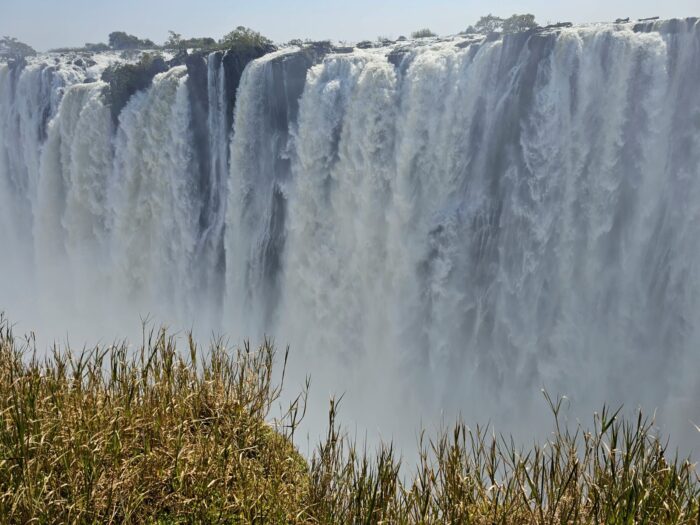
The Eastern Cataract of Victoria Falls. James Baxter
In central Zambia, the terrain grew tougher, especially approaching and descending into the Luangwa Valley. As he neared the Malawian border, Baxter encountered more settlements and busier roads. Although infrastructure improved slightly, much of the region remained rural and agricultural. On the final stretch toward the Mwami Border Post, Baxter passed through more densely populated areas.

Baxter with an inquisitive young Zambian. Photo: James Baxter
Malawi and next steps
On July 30, Baxter crossed into Malawi from eastern Zambia. However, he soon discovered that a key stretch of his intended route through a large wildlife reserve is off-limits to cyclists because of the risk of encountering elephants. This meant he needed to completely rethink his route across central Malawi.
Instead of cycling through remote backcountry roads as originally planned, Baxter has opted for a safer and more direct alternative: riding southeast to the capital city (Lilongwe) and continuing along quieter rural roads toward Lake Malawi.
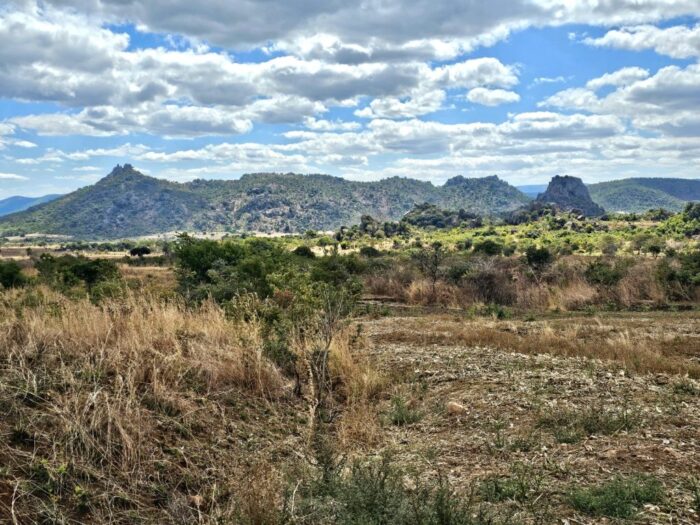
The craggy outcrops on the border with Malawi. The border was on the watershed of the tributaries of the Luangwa River in Zambia and the Shire River in Malawi. Ultimately, both flow into the Zambezi River. Photo: James Baxter
Though this new route is more populated and less adventurous, it avoids busy truck corridors and allows him to maintain his commitment to traveling independently without relying on lifts.
With the new plan in place and logistics sorted, the Briton is now ready to continue his trans-African ride through the heart of Malawi.


